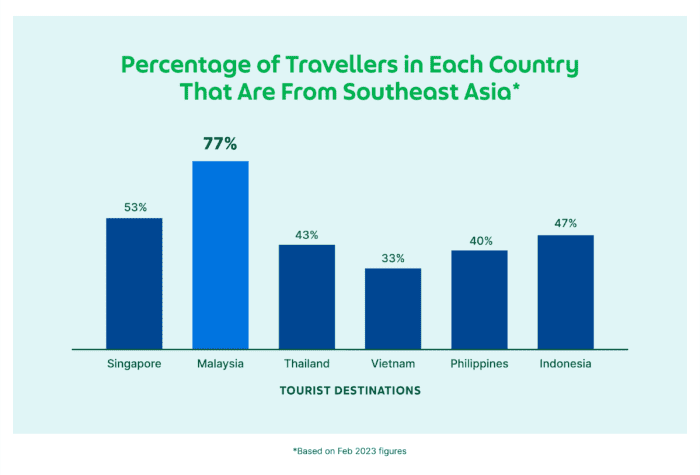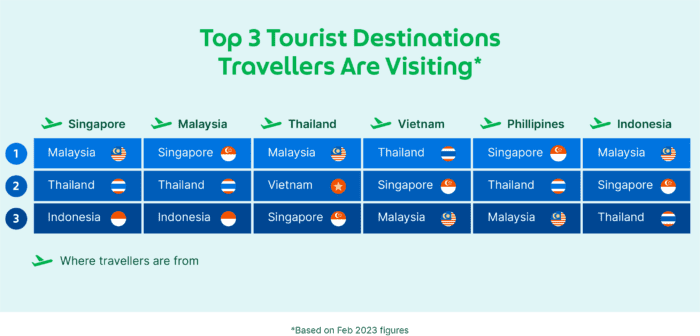Grab sees comeback in international travelling
Pent-up travel demand continues to drive tourism globally as travellers rush to make up for lost time.
In 2022, rides to and from airports in the region grew three times between January and December 2022—signalling a steady rebound in tourist numbers in Southeast Asia.
Rides to and from airports grew three times in 2022.
This came even as Chinese travellers, who made up the world’s biggest source of tourism before the Covid-19 pandemic, remained in lockdown till January this year.
Globally, we’re seeing notable increases in international tourist numbers. More than 900 million tourists travelled internationally in 2022, or double the number recorded in 2021—though still at 63 per cent of pre-pandemic levels, according to latest figures from the World Travel Organization.
People are travelling within Southeast Asia
As countries globally lift travel restrictions, Southeast Asians are heading to vacation spots that are close to home.
More than half of all travellers using the Grab app in the region are from other parts of Southeast Asia, based on Grab user data in February.

Malaysia saw the highest proportion of travellers hailing from other Southeast Asian countries, at 77 per cent. Singapore saw Southeast Asian users making up slightly over half of its tourists.
In Indonesia, 47 per cent of Grab’s international users were from Southeast Asia.
Meanwhile, the majority of travellers to Vietnam, was from outside of the region, at 67 per cent. The country saw its biggest source of tourists coming in from South Korea, according to the latest Grab rides data.
It is no surprise that neighbouring country Malaysia was a top destination for Singaporeans and vice versa.
Thailand, known for its beaches, local delicacies and vibrant nightlife, was a consistent favourite among Southeast Asian travellers too.


International travellers are returning
With international tourism returning, Grab saw traveller bases outside the region in December coming from countries including South Korea, the United States, Canada, Australia, India and Hong Kong, among others.
By March, as lockdowns eased, tourists from China outpaced that of Australia, India and Hong Kong, though still behind South Korea, the United States and Canada.
Return of Chinese tourists
Chinese tourists returning after a multi-year lockdown have already sent the country up Grab’s tourist chart in March.
Pre-pandemic, Chinese travellers have been estimated to make up some 40 per cent of tourist numbers in the region.
Southeast Asia can expect to continue to see a rise in Chinese tourist numbers, according to a recent Grab survey on the travel patterns of mainland China tourists.
About 53 per cent of those between 20 and 39 years old surveyed in February expressed a higher intent to travel to Southeast Asia with Thailand, Malaysia and Singapore topping the list.
To support travellers from China, Grab has a Mini Program within WeChat’s app that will open Grab’s ride-hailing services to WeChat users. Through the program, users will be able to book rides across more than 500 cities in eight Southeast Asian countries.
3 Media Close,
Singapore 138498